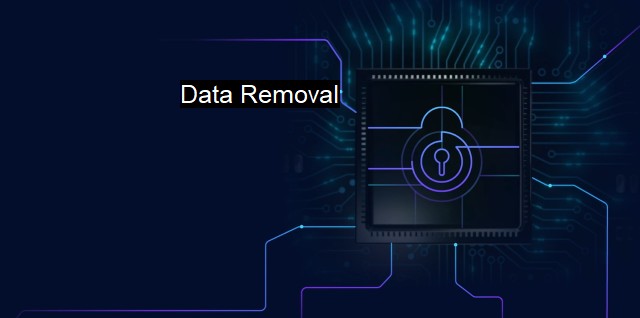What is Data Removal?
Securing Sensitive Data: The Crucial Role of Expert Data Removal Techniques and Software in Cybersecurity
Data removal is a critical process in the field of cybersecurity and it plays an integral role in antivirus strategies. It refers to the method of clearing information from a data storage device completely, making it irretrievable. This leaves no trace of the original data or the features that were associated with it. Sensitive information includes personal data or private enterprise data that, when in the wrong hands, can be exploited. As such, this procedure is often employed in the disposal of used storage devices.Data removal is important because simple deletion or formatting a device does not ensure complete data erasure. These processes only remove pointers that index where data is stored; the actual data remains intact on the storage device and can be retrieved by individuals or hackers with malicious intent. Dedicated software or hardware tools are required to conduct secure and efficient data removal that conclusively eliminates any lingering trances of information.
In the context of cyber-security, data removal is part of a wider set of practices that guard against cyber threats. Cybersecurity endeavors to deliver a decent level of protection for computer systems, servers, networks, and data from digital attacks. Without appropriate measures for data removal, once secure information would be at risk for such attacks that could lead to considerable financial losses or extensive damage to one's reputation.
Encompassed in the cybersecurity realm is antivirus software, which is a computer program designed to prevent, identify, and obliterate malicious software. In terms of this software, the process of data removal is instrumental to its operation. When the antivirus software identifies an infected file, it will either isolate it or completely remove it to protect the host system from a potential risk. The removal in this perspective involves the deletion of harmful data, which is a key aspect of mitigating cyber threats. In this case, data removal is not just about securing privacy, but also about maintaining the system integrity against security threats.
There are standard data removal methods that are sanctioned by various cyber and data protection regulations. These include data wiping which overwrites data areas with zeros, ones, or any other arbitrary patterns, ensuring the privacy of original data. There is also the cryptographic erase which wipes data by simply destroying the encryption key, thus inhibiting any access to the encrypted data. Other methods include degaussing, where a magnet field is used to remove data on magnetic storage, and physical destruction, which aims at making data storage hardware physically useless for data recovery attempts.
Implementing good data removal practices is not an option but a necessity in the current fast-paced digital world. With considerably large amounts of data being circulated and stored in various places, vulnerabilities are heightened. Proper data erasure and sanitation techniques can aid in neutralizing potential threats; hence, enabling safer use and transfer of digital information.
Instructively, responsible data life cycle management practices should incorporate sustainable and efficient data removal strategies. These practices should be both proactive and reactive for maximum effectiveness. Proactively, they should prevent occurrences of unauthorized access and misuse of data, and reactively, they should ensure proper handling of potential breaches to limit damage.
Data removal is a fundamental aspect of cyber security and antivirus programs. It ensures that data privacy and integrity are upheld at all costs. Both individuals and enterprises must treat data removal with the utmost seriousness, as it has a profound impact on cybersecurity. For that not only guarantees the protection of sensitive personal and corporate information, but it also acts in securing systems against harmful data that could disrupt their operation or compromise their safety.

Data Removal FAQs
What is data removal?
Data removal refers to the process of permanently deleting data from a device or storage medium so that it cannot be recovered. This process ensures that sensitive or confidential information is not accessible by unauthorized individuals.Why is data removal important for cybersecurity?
Data removal plays a crucial role in cybersecurity as it prevents hackers or cybercriminals from gaining access to sensitive information. Even after deleting files, traces of data can stay on the device and be retrieved through various methods. Proper data removal ensures that any residual data is no longer accessible, reducing the risk of data breaches.How can data removal be performed?
Data removal can be done through various methods like using data erasure software, encrypting data before deleting it, physical destruction of storage media, or overwriting data multiple times. The most suitable method depends on the type of data and the level of security required.Is data removal the same as antivirus protection?
Data removal and antivirus protection are not the same but are complementary to each other. Antivirus software prevents malware and viruses from infecting the system, whereas data removal ensures that sensitive data is permanently deleted. While antivirus software protects the system from external threats, data removal protects the information from internal threats or accidental exposure.| | A | | | B | | | C | | | D | | | E | | | F | | | G | | | H | | | I | | | J | | | K | | | L | | | M | |
| | N | | | O | | | P | | | Q | | | R | | | S | | | T | | | U | | | V | | | W | | | X | | | Y | | | Z | |
| | 1 | | | 2 | | | 3 | | | 4 | | | 7 | | | 8 | | |||||||